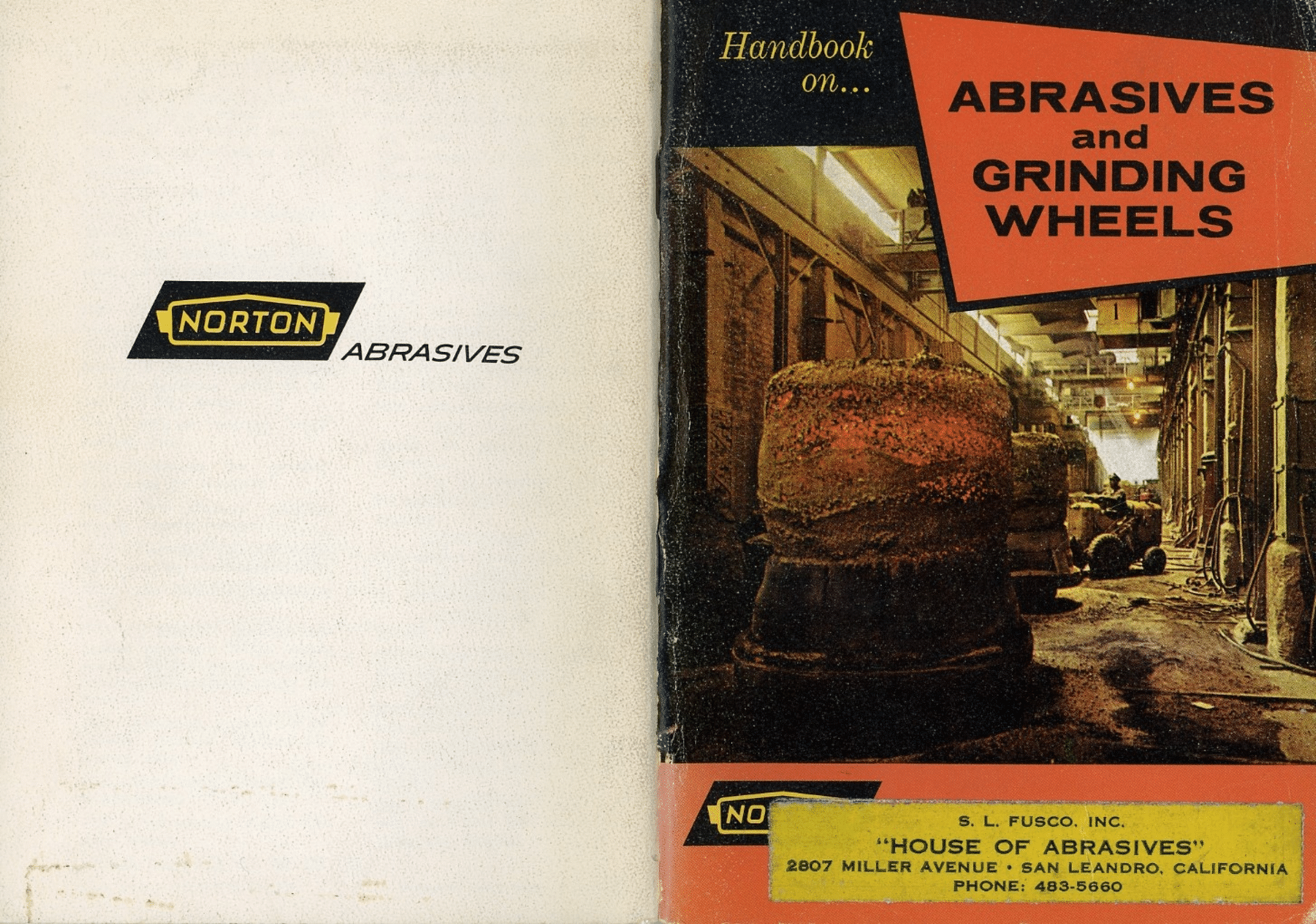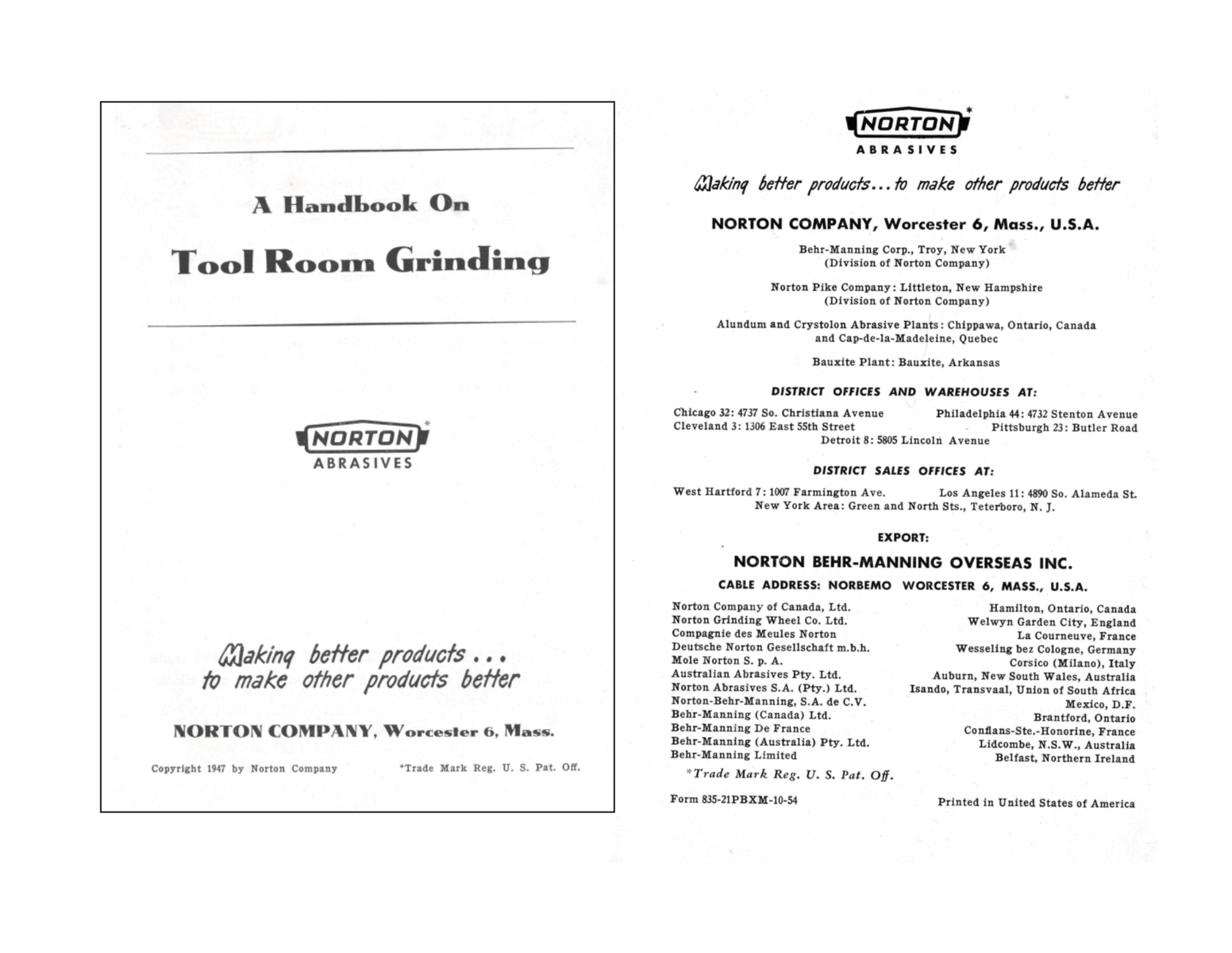eKretz
Diamond; Mod Squad
- Joined
- Mar 27, 2005
- Location
- Northwest Indiana, USA
Here is a small compendium of useful grinding info ranging from basic to more advanced. A lot of this is from my personal stash, a few were contributed by others, with notation of the contributing member. I'll add more as I get to it.
Here is a nice little compendium of useful grinding PDFs, this link was first posted by member @Robert R

PDF attachments at the bottom should be:
Norton Grinder Hand's Wheel Dressing Manual
Selecting the Right Grinding Wheel
Dressing Resin and Metal Bond Wheels
DoAll Grinder Manual - has a lot of good grinding tips
Grinding High Speed Steel - courtesy of member EG
Uddeholm's Grinding of Tool Steels
Grinding Cemented Carbide Tooling - a good article I saved from "Manufacturing Technology"
Dressing and Resurfacing Mag Chucks - from KO Lee - this is the exact same way I've always done it; keep in mind the recommended ⅜" stepover is probably intended for a 1" wheel width. I generally go for ⅓ the wheel width on stepover with a dust cut for final finishing. And coarse dress on the wheel. That helps the chuck grip parts a little better by increasing the coefficient of friction. Make it grippy, not pretty. Also, chuck grinding may require more than one flip to get everything as flat as possible.
Truing and Dressing - from Noritake - another good addendum to the other two dressing guides with even a little more specific information
Dressing Resin Bond Diamond Wheels - Graff Diamond Tools
Also a couple of Dropbox links. Posting these as Dropbox links because they are too big to attach to the post.
Norton's Handbook on Abrasives & Grinding Wheels (this has really good info about selecting wheels as well as grit and wheel type suggestions for different materials).

Norton's Handbook on Toolroom Grinding

Here is a nice little compendium of useful grinding PDFs, this link was first posted by member @Robert R

PDF attachments at the bottom should be:
Norton Grinder Hand's Wheel Dressing Manual
Selecting the Right Grinding Wheel
Dressing Resin and Metal Bond Wheels
DoAll Grinder Manual - has a lot of good grinding tips
Grinding High Speed Steel - courtesy of member EG
Uddeholm's Grinding of Tool Steels
Grinding Cemented Carbide Tooling - a good article I saved from "Manufacturing Technology"
Dressing and Resurfacing Mag Chucks - from KO Lee - this is the exact same way I've always done it; keep in mind the recommended ⅜" stepover is probably intended for a 1" wheel width. I generally go for ⅓ the wheel width on stepover with a dust cut for final finishing. And coarse dress on the wheel. That helps the chuck grip parts a little better by increasing the coefficient of friction. Make it grippy, not pretty. Also, chuck grinding may require more than one flip to get everything as flat as possible.
Truing and Dressing - from Noritake - another good addendum to the other two dressing guides with even a little more specific information
Dressing Resin Bond Diamond Wheels - Graff Diamond Tools
Also a couple of Dropbox links. Posting these as Dropbox links because they are too big to attach to the post.
Norton's Handbook on Abrasives & Grinding Wheels (this has really good info about selecting wheels as well as grit and wheel type suggestions for different materials).
Norton's Handbook on Toolroom Grinding
Attachments
-
Norton Grinder Hand's Dressing Manual.pdf5.3 MB · Views: 147
-
Select the Right Grinding Wheel.pdf680.4 KB · Views: 123
-
Dressing resin and metal bonded diamond and CBN grinding wheels.pdf261.6 KB · Views: 93
-
DoAll Grinder Manual.pdf1.9 MB · Views: 106
-
Grinding High Speed Steel.pdf4 MB · Views: 112
-
Uddeholm Grinding of Tool Steel.pdf751.9 KB · Views: 73
-
Grinding Cemented Carbide Tooling.pdf387.5 KB · Views: 65
-
Dressing and Resurfacing Mag Chucks.pdf103.7 KB · Views: 83
-
Truing and Dressing.pdf1.9 MB · Views: 86
-
Dressing Resin Bond Diamond Wheels.pdf5.4 MB · Views: 61
Last edited:



 to our mod for putting such info together in one spot.
to our mod for putting such info together in one spot.